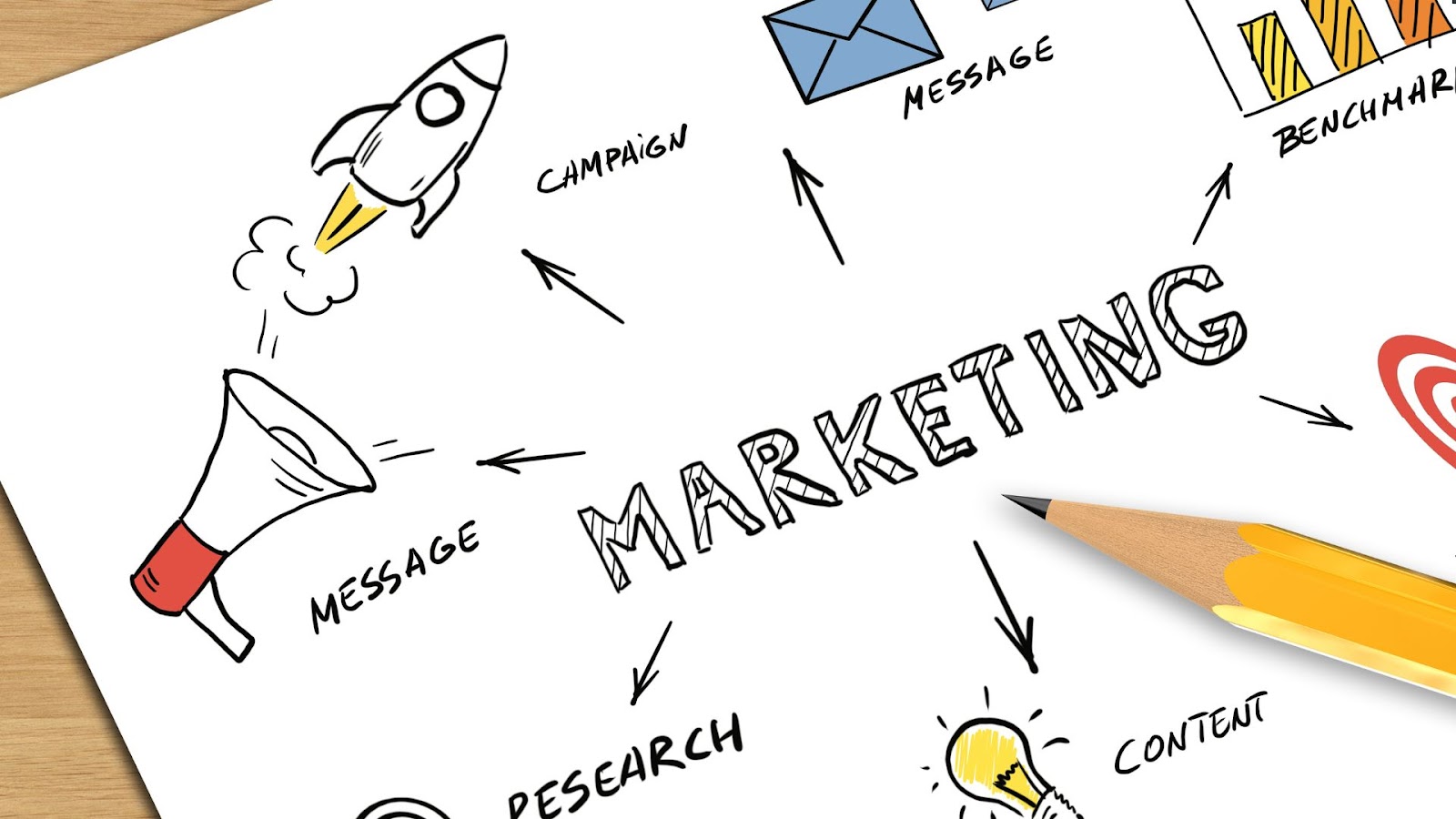Core Concepts of Marketing: 7 Basics Brands Must Know About
Updated on
Published on

Marketing is a niche that isn’t steady. Tools and approaches change fast. And this is especially true today. Surrounded by advanced technology like AI and others, businesses have to keep an eye on fast and constant changes. They need to replace traditional approaches with cutting-edge tactics to stay afloat. Yet, the importance of marketing basics remains huge. The fundamental concepts are still out there and should be held in mind to drive sustainable success.
So, what is the marketing concept? It’s an umbrella term used to define an idea, tool, channel, or any other element of advertising. And which one of them should be at the heart of your strategy in 2025? In fact, it’s a set of concepts rather than one specific construct. In this guide, we’ll discuss the top 7 essentials that every business should understand and implement. Let’s get to it.

Marketing Funnel
A funnel is the first marketing concept every business should be aware of and align with. In a nutshell, it’s a reflection of the customer journey. It typically consists of multiple stages, spanning the full lifecycle from the moment a prospect becomes aware of a product or service to the point where they become loyal buyers who advocate for your brand.
Understanding the funnel helps implement data-driven marketing that stimulates growth. In particular, it lets you:
- Map out the stages prospects go through before becoming your customers.
- Identify stages where prospects drop off.
- Tailor your marketing messaging to specific stages of the funnel.
Target Audience
Let’s face it–building your marketing campaign strategy in an attempt to reach everyone, you are actually reaching no one. Every customer group demands a different message and approach to convert them. Thus, researching and identifying your target audience is non-negotiable today, which makes TA another core concept to keep in mind.
When a brand gets clear on its TA, it can tailor literally every aspect of its campaigns, including channels of communication, offers, and key messages. This helps deeply resonate with prospects and thus facilitates conversions, loyalty, and growth.
There are multiple tools and methods used in audience research:
- Surveys and polls
- Focus groups
- Interviews
- Social listening
Furthermore, competitor, traffic, and campaign analysis can provide you with even more audience data that you can act on. These tasks can be delegated to smart analytical tools. For example, some businesses choose Semrush for tracking their traffic and competitors. However, you can also find Semrush competitors that would offer you the same (or more) features at a more budget-friendly price.
Brand Positioning
Brand positioning is the marketing concept of ultimate importance. It consists of a plethora of elements:
- Overall branding
- Mission
- Vision
- Value proposition
- Messaging
- Voice, etc.
These tiny details define how your brand is perceived. The core idea is to create an image that highlights your uniqueness and differentiates you from competitors.
In order to create positioning that leaves a deep and lasting impression on your TA, you need to have a clear understanding of your target customer, niche specs, and unique benefits of your product or service. Additionally, you need to have proof of those benefits, such as reviews, case studies, etc.
Further, you need a value proposition. Basically, it must reflect what your business offers and what makes your offer different or better. Once you formulate your proposition, you can build your marketing messaging off this. Most importantly, remember to speak your audience’s language to resonate. Also, keep focus on clarity and use your messaging consistently everywhere.
Channels and Tactics
Another two essential concepts in every brand marketing strategy are channels and tactics you use to reach and interact with your TA. As a brand, you will need to use a combination of different channels.
There are three types of media to tap into:
- Owned media. This term relates to any media that your business owns and, respectively, controls. The most common examples include your website, blog, or email list. Using these channels gives you full control in terms of what kind of content you post and how you distribute it. Also, these channels are typically cost-effective. The downside? They limit your outreach to existing customers and prospects who are already familiar with your brand.
- Earned media. This term applies to media that don't belong to you. But that mentions your brand, links back to you, or otherwise distributes your content. Some examples of earned channels include backlinks, PR articles, guest blog posts, user-generated content (UGC), shares on social media, etc. The big benefits of such channels include enhanced trust and access to new audiences. The cons include a lack of control and potential damage you can gain from earned mentions (for example, if they come from irrelevant and non-trustworthy sites).
- Paid media. Any channel you buy for money to distribute your content and promote your business, such as promoted posts, paid ads, sponsorships, etc. The biggest benefits of such media include good control, meticulous TA setup, and instant results. The downside is that paid media brings quick wins, but doesn’t build long-term exposure, for example, like search engine optimization (SEO).
Different types of media require the use of diverse marketing techniques—from SEO and email advertising to PR and paid campaigns. Mixing all relevant digital and traditional techniques wisely can help you create exposure and growth.
Customer Experience
There are many things that propel your marketing funnel and help you convert more customers. Your branding, advertising approach, and product or service quality all play big roles. Yet, there is one more concept that shouldn’t be undervalued. And it’s customer experience.
In reality, this is an umbrella term that spans all touchpoints of your interaction with customers that eventually shape how they feel about your brand. This can include:
- Website UX
- Personalization in content and offers
- Customer support
- Community
- Programs and discounts
- Packaging
- Follow-ups
If you pay attention to small experience-related details, it will help connect with your TA more deeply, on an emotional and sensory level. This is the key to retention and advocacy. Thus, it’s important to pay due attention to these things and create meaningful experiences that your clients will remember.
Core Metrics
While it’s important to deploy a strategy that brings results, it’s hard to break the ceiling if you don’t analyze data and continuously improve. Hence, another essential marketing concept you must have in your strategy is analytics.
In order to enhance your approach strategically and achieve better results every time, you need to focus on essential metrics, such as:
- Traffic
- Customer engagement
- Bounce rate
- Conversion rate
- Customer acquisition cost (CAC)
- Customer lifetime value (CLV)
- Return on investment (ROI), etc.
At the same time, you need to link your metrics to specific short-term and long-term goals. And you should pay less attention to vanity metrics that can be misleading and not provide actionable data for strategy improvement.

Adaptability
Marketing is a complex, all-encompassing field. It changes rapidly. And the way you can adapt to changes defines your viability and competitive advantage. That’s why adaptability is also among the core concepts of marketing that everyone should know and embrace.
Here’s how to get into an adaptive mindset:
- Keep an eye on big and small-scale industry changes.
- Track and analyze shifts in consumer preferences and behavior.
- Watch seasonal changes.
- Keep an eye on emerging trends.
- Measure results and improve.
- Experiment with different aspects of your strategy to find working tools for growth.
The Bottom Line
As you now know, despite constant advancement, there are still core concepts of marketing that remain relevant and working:
- Funnel
- TA
- Brand positioning
- Diverse channels and tactics
- Customer experience
- Analytics
- Adaptability
Each of these matters. You must keep them in mind at all times. And one more tip that will help. Tools and approaches may change. However, serving your customer is always the primary goal. Keep your approach customer-centered and intentional to hack growth.







